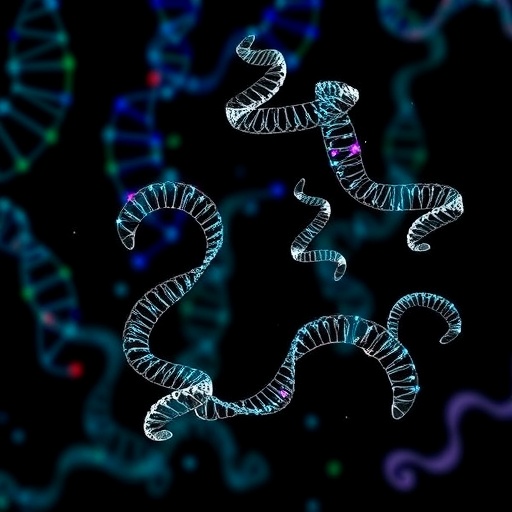Ovarian cancer remains one of the most challenging malignancies to treat, primarily due to its propensity for chemoresistance. This complex phenomenon involves a myriad of biological mechanisms that contribute to the survival of cancer cells despite the administration of chemotherapy. Recent research has increasingly focused on the intricate signaling networks and microRNA (miRNA) crosstalk that play pivotal roles in mediating chemoresistance in ovarian cancer. Understanding these interactions could unveil novel therapeutic targets and improve treatment outcomes for affected patients.
Signaling networks in cancer cells act as vital communication channels, relaying information from the external environment to the nucleus where cellular decisions regarding growth, survival, or death are made. In ovarian cancer, several key signaling pathways, such as the PI3K/Akt and MAPK/ERK pathways, have been implicated in promoting cell survival and limiting the efficacy of chemotherapeutic agents. These pathways are often activated by various growth factors present in the tumor microenvironment, suggesting that ovarian cancer cells are not merely passive participants in their demise but rather active players in evasion strategies.
In conjunction with these signaling pathways, miRNAs have emerged as significant regulators of gene expression and cellular behavior in cancer. These small, non-coding RNA molecules can modulate the expression of genes involved in apoptosis, cell cycle regulation, and drug resistance. Dysregulation of miRNA expression profiles has been documented in ovarian cancer, illuminating their potential roles as both biomarkers and therapeutic targets. Understanding how specific miRNAs interact with key signaling pathways may shed light on the mechanisms driving chemoresistance.
One of the striking features of miRNAs is their ability to fine-tune gene expression post-transcriptionally, which allows for rapid cellular adaptation to stressors, including chemotherapeutic agents. For example, miR-21 has been shown to confer resistance to platinum-based therapies by inhibiting pro-apoptotic factors, while other miRNAs may promote apoptosis by targeting anti-apoptotic proteins. The balance of these opposing miRNA activities can significantly influence a tumor’s sensitivity to chemotherapy.
Recent studies have demonstrated that the crosstalk between miRNAs and signaling networks is critical for determining the fate of ovarian cancer cells in response to chemotherapy. This interplay may involve feedback loops where signaling molecules influence miRNA expression, which in turn modulates the activity of these same pathways, creating a complex web of interactions that ultimately dictate cell survival or death. Consequently, deciphering this network holds promise for identifying potential therapeutic interventions aimed at disrupting these pathways.
The tumor microenvironment further complicates the narrative of ovarian cancer chemoresistance. Factors such as a hypoxic environment, the presence of extracellular vesicles, and immune cell infiltration can create an optimal setting for cancer cells to thrive. These components can also influence miRNA expression and signaling pathway activation. For instance, hypoxia-inducible factors can upregulate certain miRNAs that confer resistance, suggesting a dynamic relationship between the tumor microenvironment and cellular signaling.
Furthermore, advancements in technologies such as high-throughput sequencing and bioinformatics have enabled researchers to map the intricate networks of miRNA and target gene interactions. This data reveals that multiple miRNAs can target a single gene, while a single miRNA may regulate multiple genes, illustrating the complexity of these regulatory networks. Such insights are invaluable for developing strategies to overcome chemoresistance, as they may inform the design of miRNA-based therapies or combination therapies that target these networks simultaneously.
In addition to miRNAs, long non-coding RNAs (lncRNAs) have also gained attention in the context of ovarian cancer. These RNA molecules, while not translated into proteins, play crucial regulatory roles in gene expression and have been implicated in various cancer-related processes, including chemoresistance. Some lncRNAs can modulate the expression of miRNAs and affect signaling pathways, further integrating them into the landscape of chemosensitivity.
The therapeutic implications of these findings are profound. By targeting specific signaling pathways or modulating miRNA expression, new therapeutic strategies could potentially restore chemosensitivity in resistant ovarian cancer cells. For example, combining traditional chemotherapy with inhibitors that target key signaling proteins, along with agents that modulate miRNA expression, could enhance treatment efficacy and prevent or overcome resistance.
In summary, the interrelationship between signaling networks and miRNA crosstalk represents a critical frontier in understanding ovarian cancer chemoresistance. As research continues to unveil the complexities of these interactions, it is hoped that actionable insights will emerge, fostering the development of innovative treatment strategies that could save lives. The quest for effective therapies in ovarian cancer is ongoing, but the recent focus on the molecular underpinnings of resistance offers a beacon of hope for patients facing this challenging diagnosis.
Continued collaboration between molecular biologists, oncologists, and therapeutic developers will be essential in translating these insights from basic research into clinical applications. As we deepen our understanding of how ovarian cancer cells evade treatment, the potential for significant advancements in patient care becomes increasingly tangible, heralding a new era in the fight against this formidable disease.
Subject of Research: The mechanisms of chemoresistance in ovarian cancer involving signaling networks and miRNA crosstalk.
Article Title: Signaling networks and MiRNA crosstalk in ovarian cancer chemoresistance.
Article References:
Nayak, R., Pandey, S., Kumar, D. et al. Signaling networks and MiRNA crosstalk in ovarian cancer chemoresistance.
J Ovarian Res 18, 185 (2025). https://doi.org/10.1186/s13048-025-01770-8
Image Credits: AI Generated
DOI: 10.1186/s13048-025-01770-8
Keywords: Ovarian cancer, chemoresistance, signaling networks, microRNA, therapeutic targets, tumor microenvironment, long non-coding RNAs, treatment strategies.




